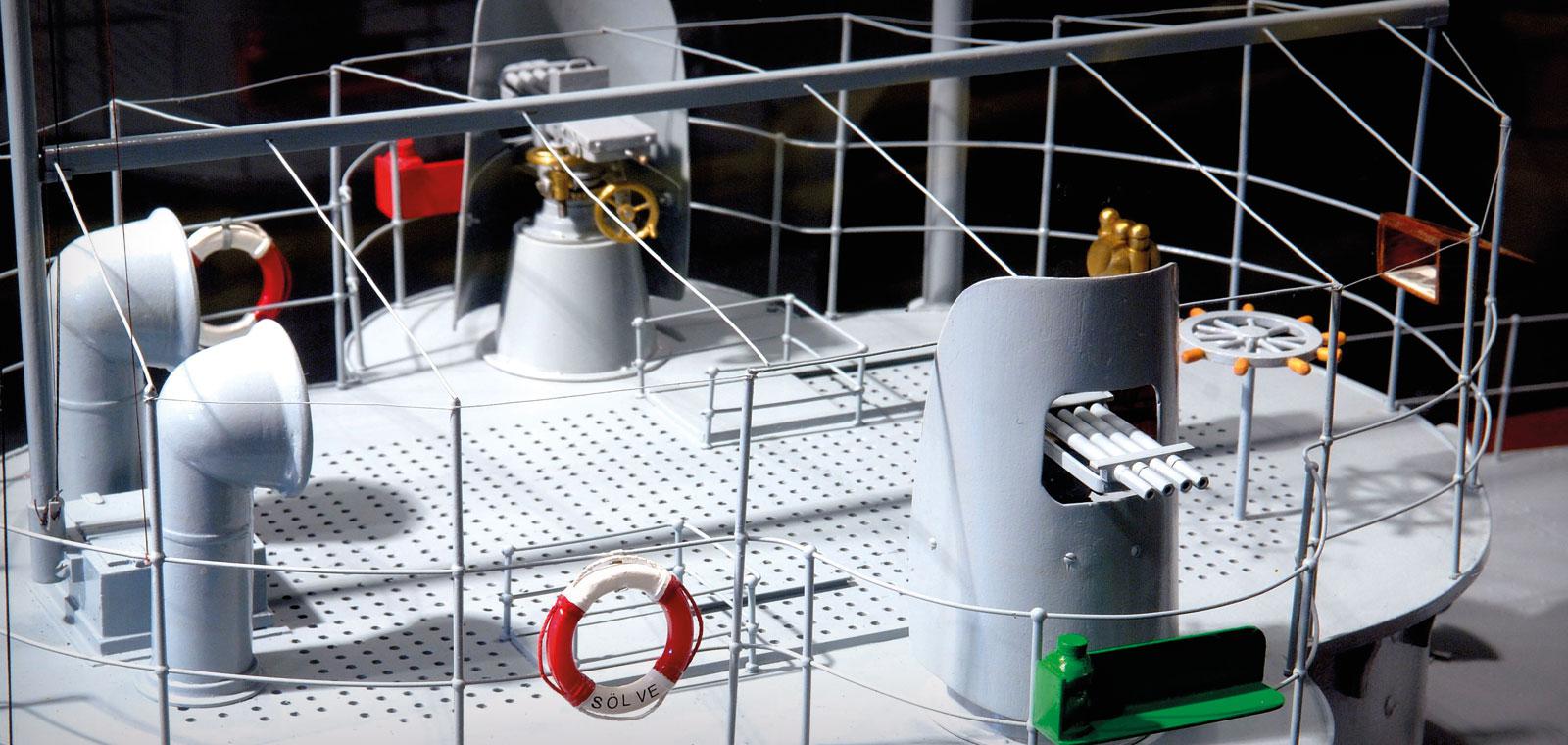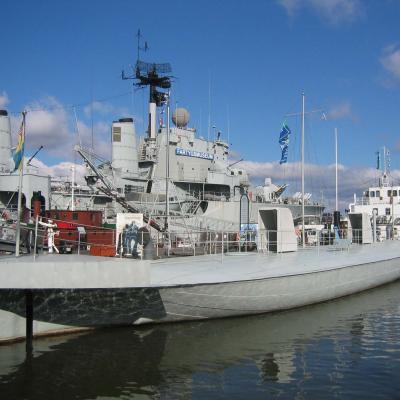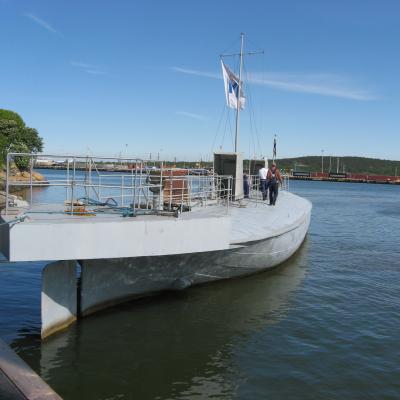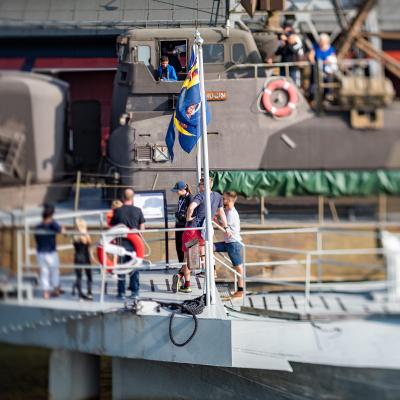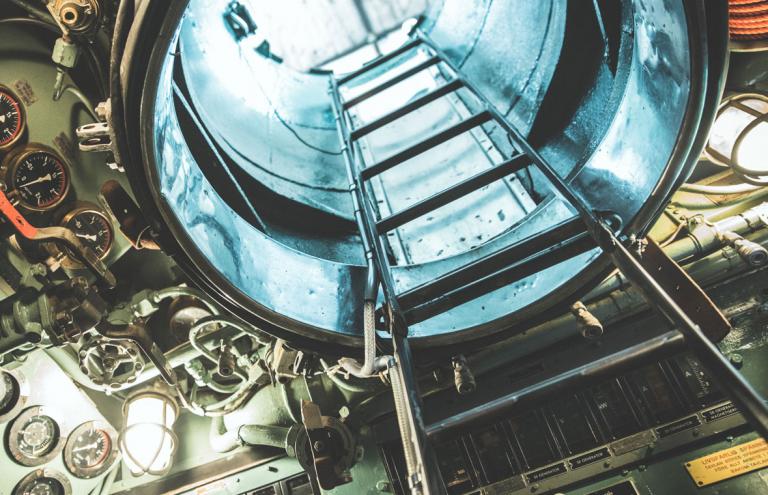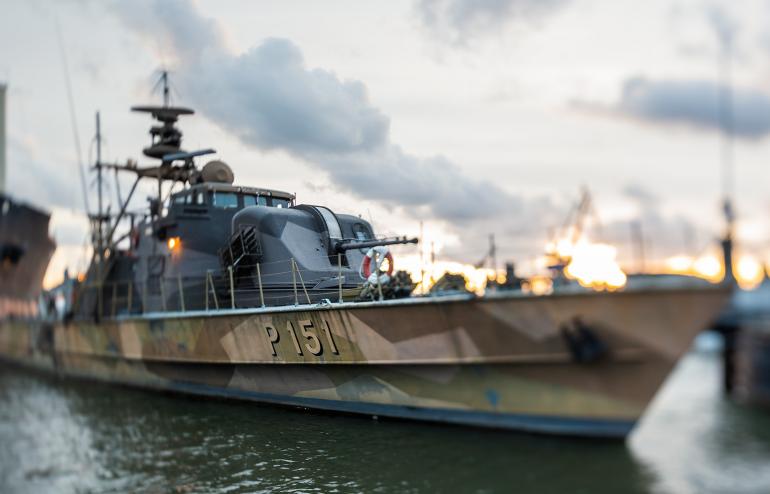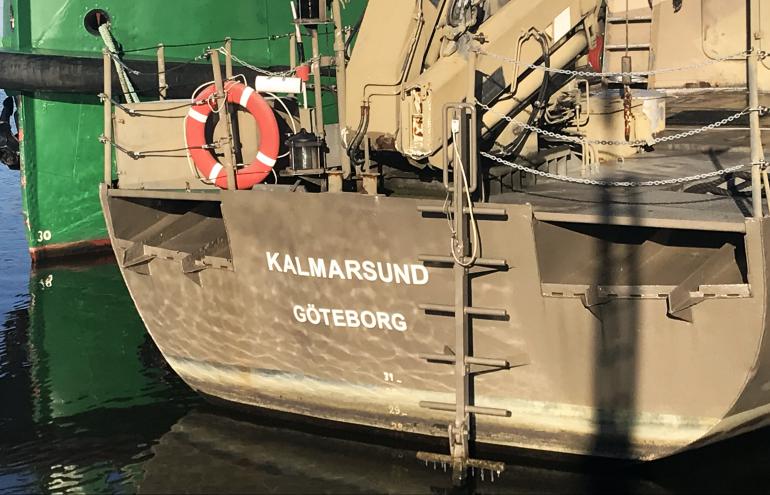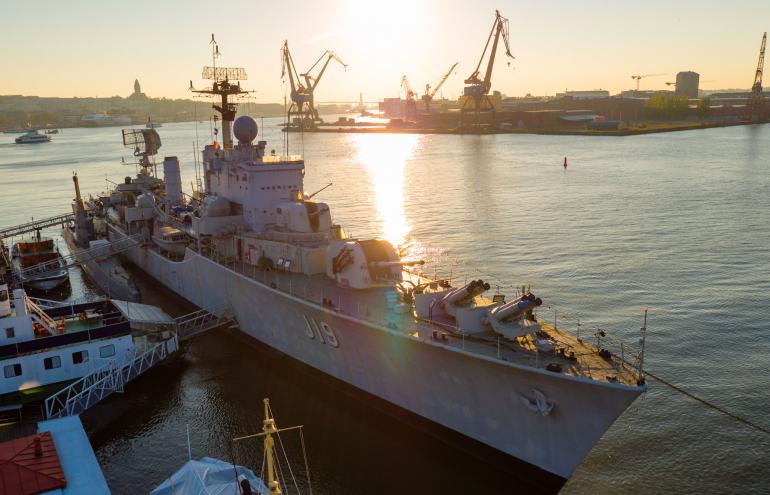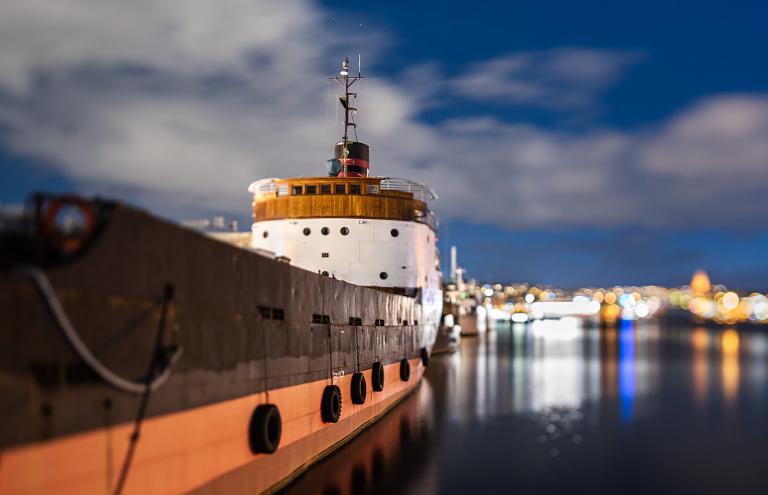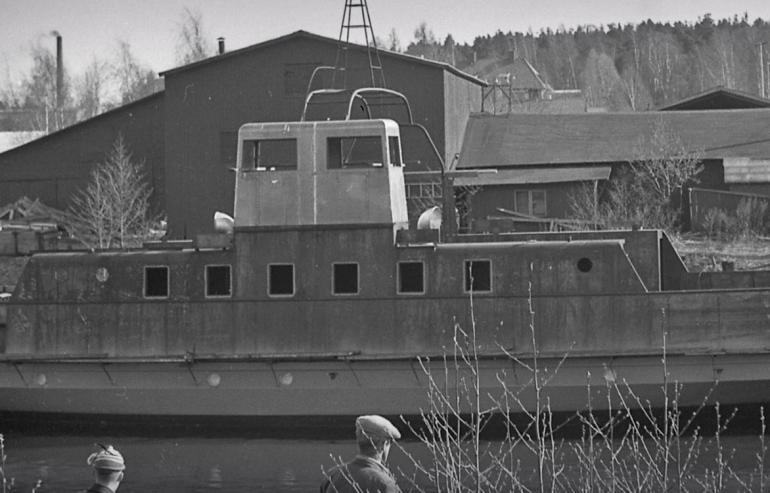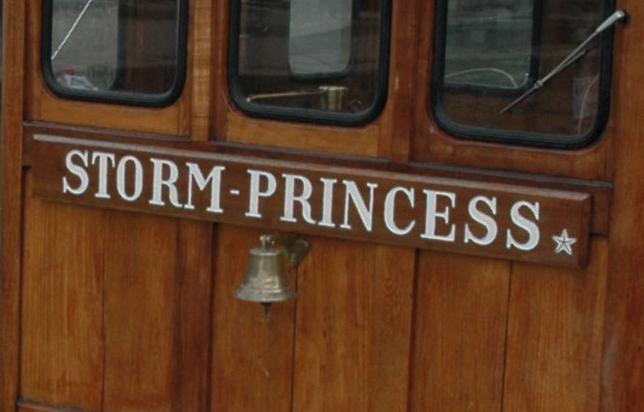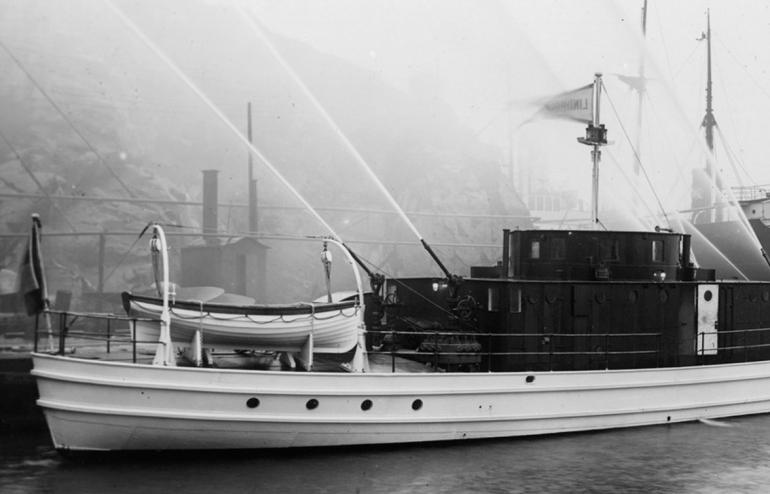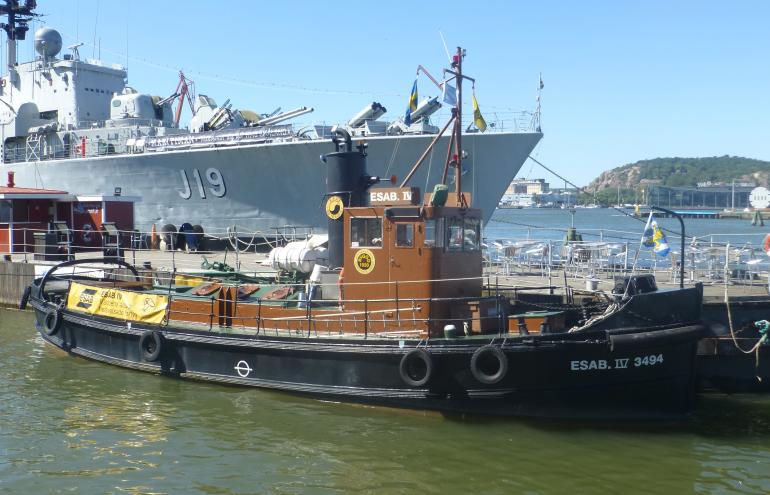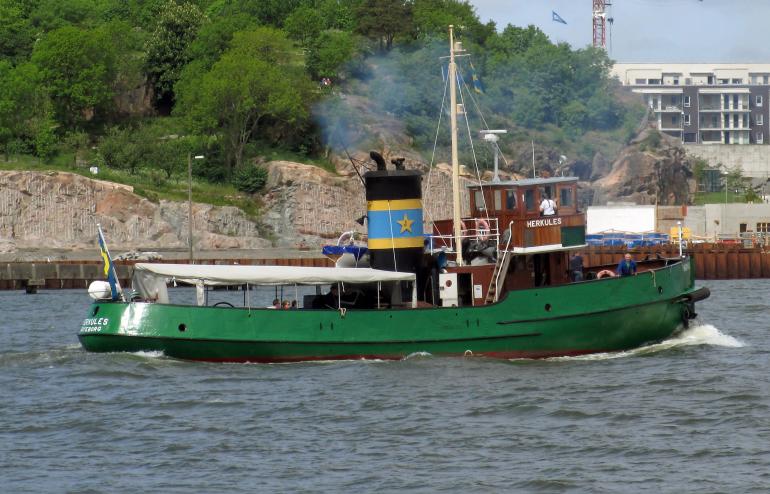Monitor Sölve
The monitor Sölve was built in 1875 at the Motala Warf shipyard in Norrköping and was one of a series of seven smaller monitors, which due to their small size could travel up the Göta älv river and defend the towns around Lake Vänern against an attacker. She was equipped with a 24 cm M/69 cannon installed in an armoured turret, as well as two 12 mm M/75 machine guns. The entire ship had to be turned to aim the cannon, and the Sölve was, therefore, also equipped with a bow rudder and two propellers. Between 1899 and 1901 the Sölve was re-armed with a 12 cm M/94 cannon that could be turned laterally 41 degrees. Two 57 mm M/89B cannons were also added to the superstructure.
After having done its duty helping to protect Swedish neutrality during the First World War, the Sölve was converted into a tanker for the Swedish Navy and renamed Pegasus. In 1949 she was sold to Mobil Oil and was used by the company until the 1980s, when she was moved to the Skeppsupphuggning i Göteborg AB scrap yard at Ringön. It was there that this sensational naval and technologically historical gem was rediscovered in 1984. The hull proved to be the original from the keel plate to the deck, and in order to avoid such a rarity ending up as scrap, a rescue campaign was launched by a number of enthusiasts. Thanks to sponsorship, the Sölve could be rescued from certain scrap death and she ended up here at Maritiman instead. Today the Sölve is the world’s only preserved third-class monitor, and she is moored at Maritiman with the aim of being restored to her original condition.
INVENTOR AND CIVIL WAR
The monitor was originally developed by Swedish inventor John Ericsson for the American Union’s fleet during the American Civil War. The USS Monitor fought the Confederate States’ CSS Virginia in the important battle of Hampton Roads in 1862. Neither ship managed to sink the other, but the Virginia retreated and the Monitor won. The Monitor and the Virginia were among the world’s first armoured ships, and after their appearance in the fleet the era of wooden ships was more or less over.
